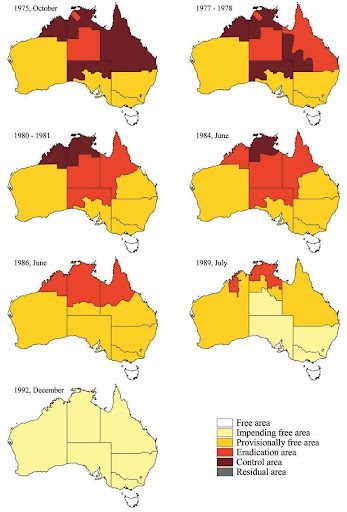Australia’s Milestone in Animal Health: Reflections on the Brucellosis and Tuberculosis Eradication Campaign
Testing cattle for brucellosis in 1978.
Countries worldwide continue to seek advice from Australian experts involved in the Brucellosis and Tuberculosis Eradication Campaign (BTEC). Launched over 50 years ago, this pioneering program remains a significant case study in animal health management.
A Landmark Achievement in Animal Health
The BTEC program achieved global recognition as one of the few successful large-scale eradications of bovine tuberculosis (TB). Initiated in 1970, BTEC was a response to trade restrictions threatened by countries like the United States and Germany, despite their challenges with TB.

Dr. Ron Glanville
Expert Insights
Dr. Ron Glanville, a veteran in veterinary medicine, started his career focusing on brucellosis in 1978. He later oversaw the TB eradication program in Queensland. His efforts contributed significantly to the success of BTEC.
Recently, Dr. Glanville presented at a World Organisation for Animal Health event in Beijing, emphasizing the unique challenges and triumphs of the BTEC program.
A Collaborative Effort
BTEC represented a $1.2 billion investment over nearly three decades, requiring collaboration between the government and the cattle industry. This partnership was crucial, as producers contributed half of the funding through levies, reinforcing their engagement in the program.
Challenges Faced
Despite its success, the eradication program was challenging. Testing was often unreliable, and the absence of boundary fences in many areas complicated efforts. Positive cases often resulted in lengthy culling processes, with compensation debates arising among producers, especially as market values shifted.
The Role of Surveillance and Testing
To combat TB and brucellosis effectively, BTEC enforced strict testing and movement controls. The establishment of the National Livestock Identification System (NLIS) was pivotal, enabling better tracing and management of cattle across Australia.

TB maps. Click on image for a larger view.
Long-Term Impacts and Future Considerations
After over 20 years of effort, Australia was officially declared free from bovine brucellosis in 1989 and from TB by the end of 1997. Final cleanup operations were necessary, with the last confirmed cases of these diseases detected in 1990 and 2000, respectively.
Lessons for Future Programs
Dr. Glanville notes that while the success of BTEC is evident, replicating such a program today remains uncertain. With estimated costs exceeding $3 billion, the social licensing for depopulation methods used previously would likely face significant public resistance.
Conclusion
The BTEC program’s legacy continues to inspire animal health management strategies globally. Its emphasis on collaboration, strict guidelines, and robust surveillance sets a benchmark for future eradication efforts.
This article provides a comprehensive overview of the BTEC program while ensuring it is structured for easy integration into a WordPress post. The format will enhance readability, and the inclusion of images adds visual engagement.



